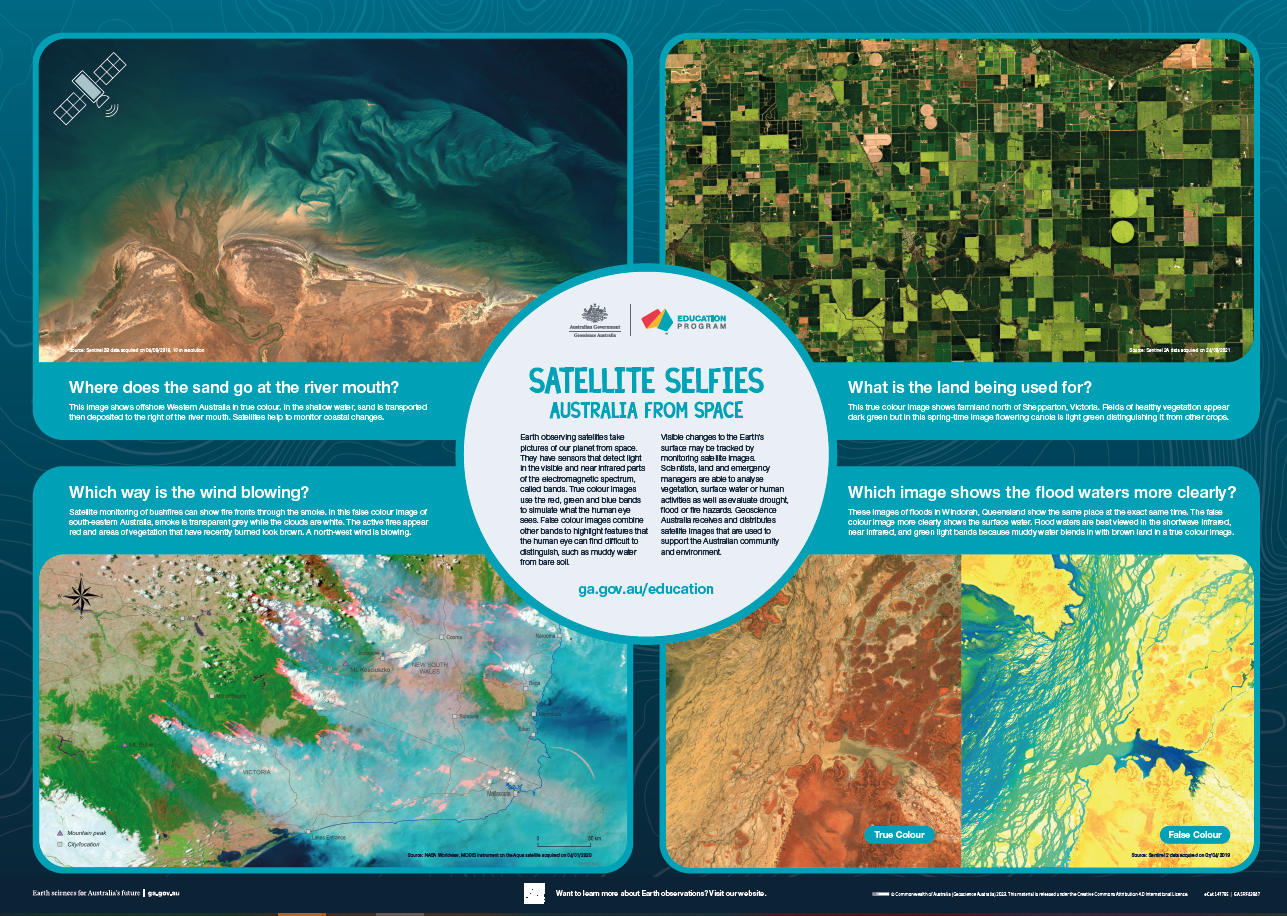satellite
Type of resources
Keywords
Publication year
Service types
Scale
Topics
-
<div>The A1 poster incorporates 4 images of Australia taken from space by Earth observing satellites. The accompanying text briefly introduces sensors and the bands within the electromagnetic spectrum. The images include examples of both true and false colour and the diverse range of applications of satellite images such as tracking visible changes to the Earth’s surface like crop growth, bushfires, coastal changes and floods. Scientists, land and emergency managers use satellite images to analyse vegetation, surface water or human activities as well as evaluate natural hazards.</div>
-
The RADARSAT Data Products Specification provides and overview of the endorsed products generated by the RADARSAT program. These products may be produced at the CDPF or at any of the RADARSAT network stations.
-
ACRES Technical Document - Landsat MSS Data Format Description. Table of Contents.
-
Geoscience Australia, ACRES distribute Landsat Multispectral Scanner (MSS), Thematic Mapper (TM) and Enhanced Thematic Mapper Plus (ETM+) data for a series of epochs or time frames covering Australia. The first epoch is 1972. These data have been produced and provided by the Australian Greenhouse Office (AGO). AGO use the data in their National Carbon Accounting System for monitoring land clearing and revegetation. This data is only available through ACRES and ACRES Landsat Distributors, and not through the AGO. More information is available at <a href="http://www.ga.gov.au/acres/prod_ser/agosuite.jsp">http://www.ga.gov.au/acres/prod_ser/agosuite.jsp</a> This data is available in 1:1M tiles or as a full continental Mosaic. Tiles areas are available at: <a href="http://www.ga.gov.au/acres/prod_ser/agotilemap.jsp">http://www.ga.gov.au/acres/prod_ser/agotilemap.jsp</a>
-
A satellite image poster that gives a view of the city of Canberra and the surrounding countryside. Derived by merging datasets from the Landsat Thematic Mapper and SPOT satellites which periodically pass over Australia, the poster provides a wealth of information as well as a pleasing visual image.
-
Includes copy of AGSO Record 1997/20
-
Archive only - various islands and reefs
-
Includes copy of AGSO Record 1997/20
-
Satellite imagery is a very useful tool in managing fires and their effects. In the lead-up to the fire season, images are used to assess fuel loads and to plan access points and fire breaks. Images are also very useful in mapping the extent of fire scars and assessing damage. Geoscience Australia acquired a number of satellite images that clearly show the effects of the fires that swept through the south-western suburbs of Canberra on 18 January.
-
Geoscience Australia, ACRES distribute Landsat Multispectral Scanner (MSS), Thematic Mapper (TM) and Enhanced Thematic Mapper Plus (ETM+) data for a series of epochs or time frames covering Australia. The first epoch is 1972. These data have been produced and provided by the Australian Greenhouse Office (AGO). AGO use the data in their National Carbon Accounting System for monitoring land clearing and revegetation. This data is only available through ACRES and ACRES Landsat Distributors, and not through the AGO. More information is available at <a href="http://www.ga.gov.au/acres/prod_ser/agosuite.jsp">http://www.ga.gov.au/acres/prod_ser/agosuite.jsp</a> This data is available in 1:1M tiles or as a full continental Mosaic. Tiles areas are available at: <a href="http://www.ga.gov.au/acres/prod_ser/agotilemap.jsp">http://www.ga.gov.au/acres/prod_ser/agotilemap.jsp</a>

